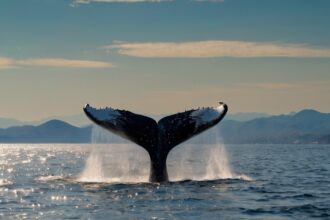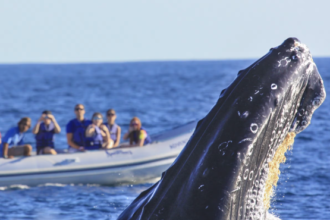False Killer Whale vs Orca
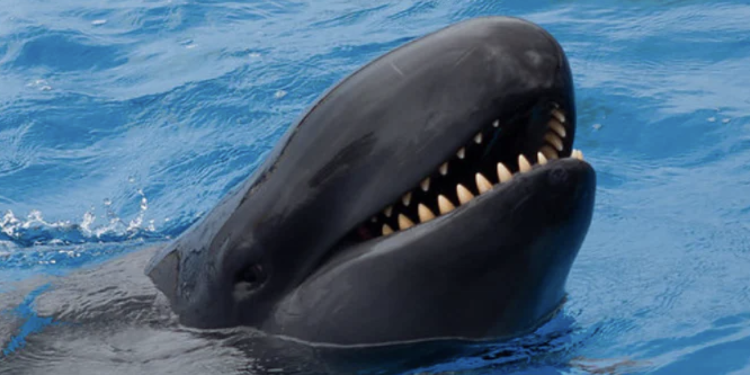
The size alone tells you everything about false killer whales and orcas. False killer whales stretch to about 20 feet and weigh 3,000 pounds. Their massive cousins, the orcas, dwarf them at 33 feet and tip the scales at 22,000 pounds. The name might trick you, but false killer whales are actually dolphins, and there even false killer whales in Puerto Vallarta in Banderas Bay as well. They just happen to share some skull features with orcas.
These amazing sea creatures live quite differently too. False killer whales love company and swim in big groups of up to 100. Orcas keep things smaller with pods of around 40 members. Their differences go way beyond just size and social groups. Each species has its own way of hunting, picks different spots to live, and talks to each other differently. These adaptations help them thrive in our oceans.
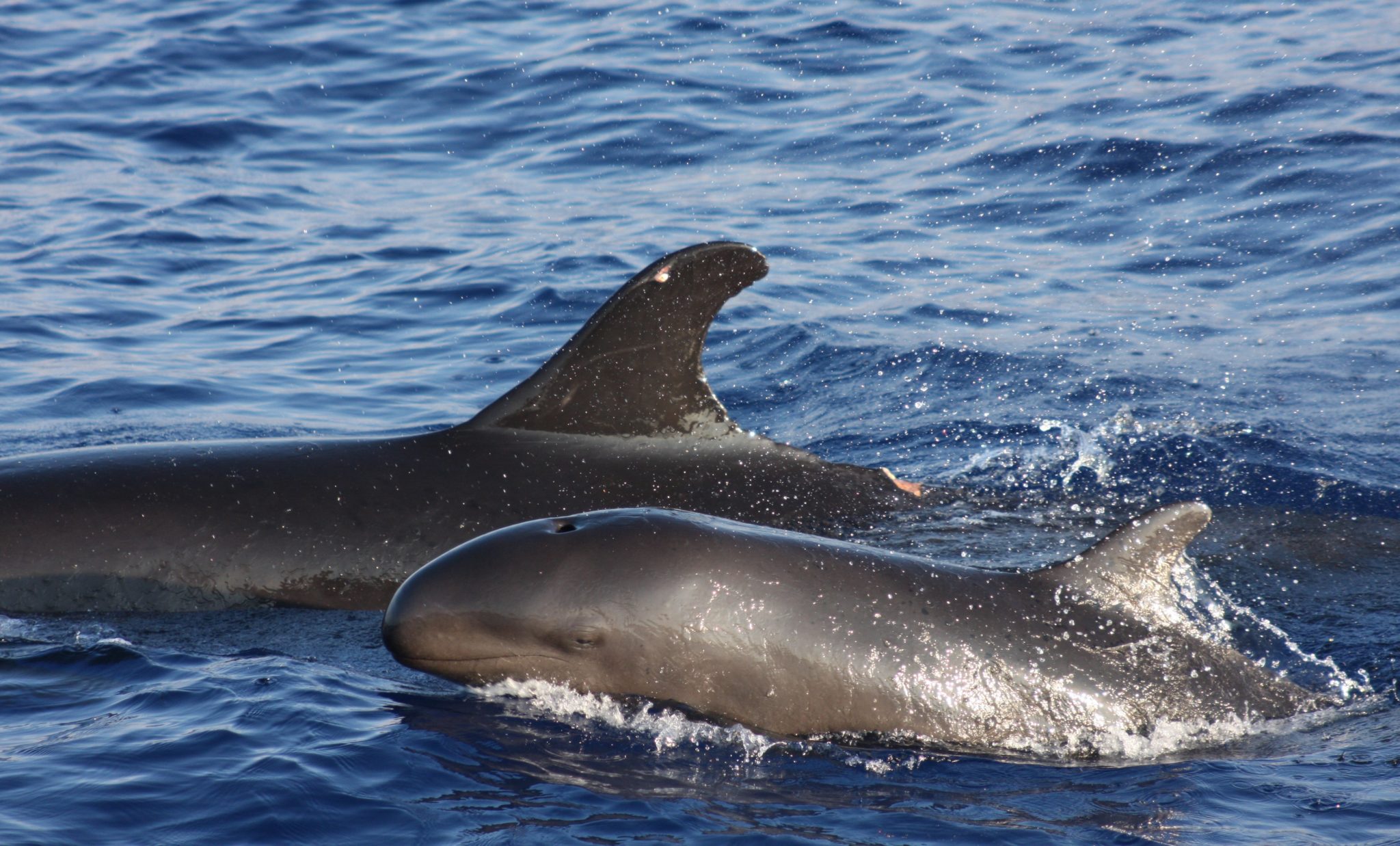
Table of Contents
- 1 Physical Differences Between False Killer Whales and Orcas
- 2 Hunting Techniques and Diet
- 3 Social Structure and Communication
- 4 Ocean Habitat and Distribution
- 5 Intelligence and Learning Abilities
- 6 Here are some FAQs about the false killer whale vs orca:
- 6.1 Do orcas eat false killer whales?
- 6.2 Are false killer whales stronger than killer whales?
- 6.3 Why are they called false killer whales?
- 6.4 Are false killer whales aggressive to humans?
- 6.5 What whale are orcas afraid of?
- 6.6 What is the only enemy of an orca whale?
- 6.7 What are the 3 types of killer whales?
- 6.8 What is the lifespan of a false killer whale?
- 6.9 What is the most aggressive whale species?
Physical Differences Between False Killer Whales and Orcas
False killer whales look quite different from their bigger cousins, the orcas. These unique creatures have physical traits that make them stand out. Let’s look at what makes them special.
Size and Weight Comparison
The size difference between these marine mammals will surprise you. False killer whales can grow up to 20 feet long and weigh around 3,000 pounds. The males grow bigger than females and are usually 10-15% larger.
Orcas are much more impressive in size. These amazing creatures can grow up to 32 feet long and weigh as much as 22,000 pounds. Male orcas stand out with their bigger pectoral flippers, dorsal fins, and tail flukes compared to females.
Color Patterns and Body Shape
You can spot these species by their unique colors. False killer whales come in dark gray or black, with a lighter shade on their belly. Their body is slim and long, which helps them swim fast.
Orcas show off their famous black and white pattern with these features:
- A white patch sits above and behind the eye
- The undersides are white
- A gray or white saddle patch appears behind the dorsal fin
Distinctive Features
These species have several unique body features that set them apart. False killer whales have a narrow, pointed head and a rounded forehead that bulges out. Their flippers have a special S-shape on the outer edge because of a bump in the middle.
The dorsal fins tell quite a story. Male orcas have the tallest dorsal fins of any cetacean, reaching up to 6 feet. False killer whales have smaller, curved dorsal fins shaped like a sickle.
Their teeth are different too. False killer whales have 44 teeth, with 14-21 up top and 16-24 on the bottom. Orcas usually have 40-56 teeth that lock together powerfully.
Hunting Techniques and Diet
These species show remarkable hunting skills under the surface, each with their own unique approaches and priorities.
What False Killer Whales Eat
False killer whales show exceptional teamwork when they hunt. These skilled predators mainly go after large fish and squid. They have a special taste for tuna and mahi-mahi. In fact, they can eat up to five percent of their body weight each day.
The way they share food among pod members is fascinating. Plus, these generous hunters sometimes offer their catch to human divers and snorkelers. Their team spirit shows in their hunting plans. They split into smaller groups of 10 to 30 members while chasing prey.
These hunters work around the clock, and they can stay underwater for up to 18 minutes at depths between 300 to 500 meters. The groups join together after catching prey, and they often leap out of the water during attacks. Hawaii’s waters see a unique display where they toss fish high into the air before eating.
How Orcas Hunt Their Prey
Orcas use sophisticated hunting methods that change based on region and prey type. These apex predators swim at speeds up to 30 miles per hour with three-inch interlocking teeth. Their hunting strategies include:
- Creating waves to wash seals off ice floes
- Coordinating attacks on larger whales
- Using tail slaps to stun fish
- Employing carousel feeding techniques to herd prey
Orcas show amazing coordination when hunting large prey. To name just one example, they take turns ramming their target, biting pectoral fins, and blocking blowhole access. So these techniques help them successfully hunt even the largest marine mammals.
Their smarts show in the way they adapt hunting strategies for different prey. Norwegian orcas use air bubbles and belly flashes to herd fish into tight balls near the surface. Their success comes from both physical strength and their ability to think and work together.
Each region’s orcas have their own food priorities. Eastern Canadian Arctic orcas mainly hunt belugas and narwhals, while Norwegian orcas prefer herring. This flexibility in hunting methods and prey choice makes them the ocean’s ultimate predators.
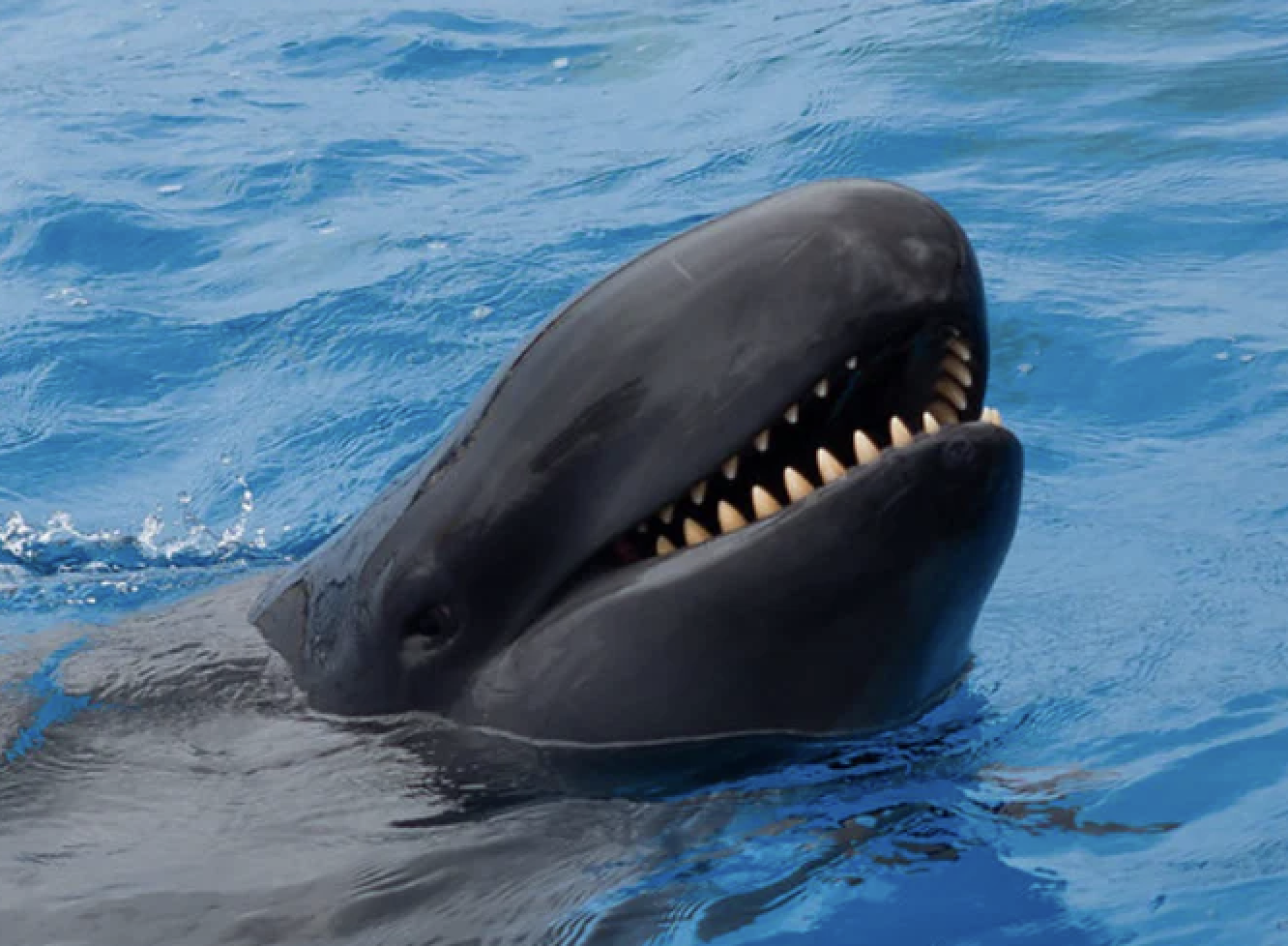
Social Structure and Communication
The complex social bonds of false killer whales and orcas shape their lives beneath the waves. Let’s take a closer look at the fascinating differences in their community structures and how they communicate.
Family Pods and Group Size
Strong family ties are the foundations of these marine mammals’ social fabric. False killer whales create expansive groups of up to 100 individuals and organize themselves into stable social clusters. These clusters show remarkable loyalty by returning to specific areas each summer and interacting with other groups.
Orcas prefer smaller, well-structured pods of up to 40 members. Their pods follow a distinctive matrilineal system where males and females stay with their mothers throughout their lives. Note that the matriline forms the basic social unit in orca communities. A female and her offspring can span up to four generations.
False killer whales display unique social behaviors and often swim with oceanic bottlenose dolphins. This inter-species relationship might help them avoid predators and find food more effectively, though scientists haven’t fully understood it yet.
Vocal Behaviors
These complex social structures depend on communication. Both species employ sophisticated vocal systems that include:
- Whistles for close-range communication
- Pulsed calls for group recognition
- Clicks for echolocation
Each orca pod develops its own dialect, creating distinct call patterns that work like family badges. Orca calves start with high-pitched ‘screams’ at birth and develop their first pulsed calls by two months. Their vocal range grows until they reach puberty.
False killer whales show diverse vocal behaviors that change between encounters. Studies show that 29% of their acoustic subgroups use only echolocation, 16% stick to whistles, and 55% use both types of sounds. These vocalizations help maintain group unity and coordinate their interactions.
The way both species communicate reflects their social complexity. Orca pods share certain calls within their clan while keeping unique elements. This allows scientists to identify specific pods by their sounds. False killer whales adapt their communication methods based on their social situation and environment.
Ocean Habitat and Distribution
The world’s oceans are home to false killer whales and orcas. These marine mammals have made their own territories in different parts of the seas.
Where to Find False Killer Whales
False killer whales live in tropical and subtropical waters around the world. These marine mammals prefer deeper waters that go beyond 3,300 feet. The Hawaiian archipelago has three separate populations that never mix:
- The main Hawaiian Islands population (about 138 individuals)
- The Northwestern Hawaiian Islands population
- The pelagic population (about 1,550 individuals)
The main Hawaiian Islands group stays close to Oʻahu, Molokaʻi, Lānaʻi, and the north end of Hawaiʻi Island. These whales usually swim within 45 nautical miles of the shore, though some travel up to 71 nautical miles from the coast.
Orca Population Locations
Orcas show they can adapt well by living in waters from Antarctica to the Arctic. The largest groups of these amazing creatures (more than 0.40 individuals per 100 km²) live in three main areas:
- Northeast Atlantic near Norway’s coast
- North Pacific along the Aleutian Islands
- Southern Ocean around Antarctica
Scientists have found some interesting numbers worldwide. They estimate about 50,000 orcas globally, with nearly 25,000 in Antarctic waters. The Eastern Pacific has kept steady numbers along British Columbia, Washington, and Oregon’s coasts.
Orcas sometimes surprise us by showing up in unexpected places. These clever hunters have been seen 100 miles up the Columbia River. The Pacific Northwest’s Southern Resident population has three distinct pods (J, K, and L) that visit the Salish Sea from late spring through fall. Their numbers have changed a lot over time, dropping from 97 in 1996 to somewhere in the 70s today.
Intelligence and Learning Abilities
The ocean’s mysterious depths hide two of the most intelligent marine mammals – false killer whales and orcas. Their complex behaviors and sophisticated brains give us a fascinating look into cetacean intelligence.
Problem-Solving Skills
These marine mammals’ brain structure forms the foundation of their impressive cognitive skills. Orcas have the second-largest brains among ocean mammals, which can weigh up to 15 pounds. Both species show advanced problem-solving abilities in their hunting and social interactions.
False killer whales’ intelligence shines through their sophisticated hunting techniques. They can dive for up to 18 minutes and navigate depths between 300 to 500 meters to catch their prey. They use echolocation not just to navigate but also to identify complex prey patterns. Research shows that 29% of their acoustic subgroups only use echolocation, while 55% combine it with other sounds.
Orcas show exceptional tactical thinking when they hunt. These clever mammals create waves to wash seals off ice floes, which shows how they can change their environment to their advantage. Their problem-solving goes beyond hunting – they understand and respond to distress signals from other species.
Social Learning Patterns
One of the most fascinating things about cetacean intelligence is how knowledge passes through pods. Both species have unique learning patterns that help them survive and develop their culture. Here are some key behaviors we’ve seen:
- Cultural transmission of hunting techniques from older females to offspring
- Development of pod-specific vocalizations and dialects
- Sharing of foraging strategies across generations
- Adaptation of behaviors based on environmental changes
False killer whales show strong social learning abilities within their pods. They keep stable family groups and pass down knowledge through mother-led family lines. Their social structure helps them share hunting techniques and communication patterns across generations.
Orcas have what scientists call one of the most sophisticated cultural systems among non-human species. Each pod creates its own dialect that stays stable over time. These unique vocalizations help identify group membership and keep social units together.
Both species’ intelligence shows in their complex social networks. False killer whales keep relationships that last up to 15 years. Orcas build intricate social bonds across multiple generations. This social complexity lets them pass down vital survival skills and cultural traditions through experience rather than genetics.
False killer whales and orcas might look alike at first glance, but these marine mammals are quite different from each other. Their unique traits range from physical features to social behaviors that set them apart. False killer whales hunt together and live in large social groups, while orcas use clever hunting tactics and stick to smaller, close-knit family pods.
Both species show remarkable smarts in how they solve problems and learn from each other. False killer whales are great at hunting as a team and building lasting social connections. Orcas, on the other hand, think tactically and create their own pod-specific languages. These amazing creatures have found their own places in the ocean – false killer whales prefer warmer tropical waters, while orcas can live anywhere from the North to South poles.
Scientists keep discovering new things about these marine mammals, but their complex behaviors and social structures still hold many mysteries. The way each species has developed its own traits shows nature’s amazing variety, even when creatures look similar. These differences help us appreciate how marine mammals have adapted to life in our oceans.
Here are some FAQs about the false killer whale vs orca:
Do orcas eat false killer whales?
Orcas are apex predators and have been observed hunting various marine species, but there is limited evidence that they specifically target false killer whales. While both species share some dietary preferences, such as fish and squid, they generally do not engage in frequent predatory interactions. However, in rare cases, orcas could potentially prey on a false killer whale if competition for food arises.
Are false killer whales stronger than killer whales?
In a comparison of false killer whale vs orca, orcas are significantly stronger due to their larger size, stronger bite force, and superior hunting abilities. False killer whales are fast and agile but do not possess the same level of strength or cooperative hunting strategies as orcas. While they are formidable predators in their own right, they do not match orcas in terms of power.
Why are they called false killer whales?
The name “false killer whale” comes from their skull shape, which closely resembles that of an orca, despite them being different species. They were first identified based on fossilized remains before being observed alive in the wild. Although they share some hunting behaviors with orcas, false killer whales are generally less aggressive and have different social structures.
Are false killer whales aggressive to humans?
False killer whales are not typically aggressive toward humans and are known to be curious and social around boats. Unlike orcas, which have been observed attacking marine mammals in the wild, false killer whales do not display aggressive tendencies toward people. In some cases, they have even been seen interacting playfully with divers and researchers.
What whale are orcas afraid of?
Orcas have very few natural predators, but they tend to avoid encounters with large sperm whales due to their size and defensive tactics. Additionally, there is some evidence suggesting that certain pods of orcas avoid areas with aggressive male sperm whales. While orcas dominate most marine environments, they may steer clear of certain large whales to avoid injury.
What is the only enemy of an orca whale?
Orcas have no natural predators, making them apex predators in the ocean. However, in rare cases, large groups of sperm whales or aggressive pods of false killer whales have been observed defending themselves against orcas. The biggest threat to orcas is human activity, including pollution, fishing nets, and declining food sources.
What are the 3 types of killer whales?
There are three main types of orcas: resident, transient, and offshore killer whales. Resident orcas primarily feed on fish and live in stable family groups. Transient orcas are marine mammal hunters and travel in smaller pods. Offshore orcas are less studied but are believed to feed on sharks and other deep-sea creatures.
What is the lifespan of a false killer whale?
False killer whales can live up to 60 years in the wild, with females generally outliving males. Their lifespan is similar to that of some orcas but shorter than that of the longest-living orcas, which can exceed 90 years. False killer whales in Mexico and other regions face threats from habitat loss and fishing activities, which can impact their longevity.
What is the most aggressive whale species?
Orcas are considered the most aggressive whale species due to their coordinated hunting strategies and ability to take down large prey, including great white sharks. False killer whales are also active predators but are not as aggressive as orcas. While false killer whales eat dolphins occasionally, they do not exhibit the same predatory dominance as orcas.
